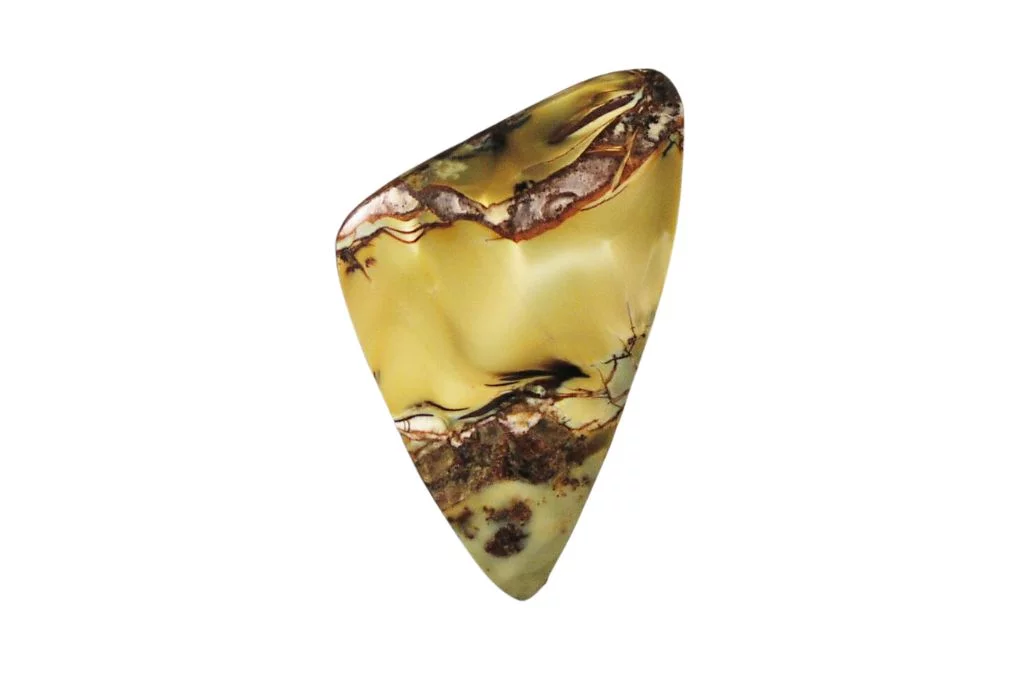Appearance of Arizona Tiger’s Eye
Arizona Tiger’s Eye, a captivating gemstone, boasts a distinctive appearance that sets it apart from other varieties of tiger’s eye. This unique crystal typically displays a rich, golden-brown base color, which is often complemented by bands of darker brown or reddish hues. The stone’s most striking feature is its chatoyancy, a phenomenon that creates a shimmering, silky luster across its surface.
Color Variations
While the classic coloration of Arizona Tiger’s Eye is golden-brown, it can also exhibit shades of red, yellow, and even blue in some specimens. These color variations are due to the presence of different minerals within the stone, such as iron oxides and crocidolite fibers. The interplay of these colors creates a mesmerizing effect, with the stone seeming to change hues as it catches the light from different angles.
Structural Characteristics
Arizona Tiger’s Eye is composed of quartz that has been pseudomorphed with crocidolite, a fibrous blue asbestos mineral. This unique formation results in a parallel, fibrous structure that gives the stone its signature cat’s eye effect. When cut and polished, these fibers align to create a smooth, reflective surface that enhances the stone’s overall luster and chatoyancy.
Notable Physical Features
One of the most remarkable aspects of Arizona Tiger’s Eye is its banding pattern. Unlike traditional tiger’s eye, which typically displays straight, parallel bands, the Arizona variety often showcases wavy or undulating bands. This distinctive feature gives the stone a more dynamic and fluid appearance, reminiscent of flowing water or rippling sand. Additionally, some specimens may contain inclusions of other minerals, such as hematite or limonite, which can create interesting patterns or color contrasts within the stone.
Historical and Cultural Significance
Arizona Tiger’s Eye, also known as Desert Tiger’s Eye or Mojave Gold, has been prized for centuries for its unique chatoyant effect, which resembles a cat’s eye. Native American tribes in the southwestern United States have long valued this stone for its protective qualities and connection to the earth. They often used it in jewelry and ceremonial objects, believing it brought good fortune and warded off evil spirits.
Metaphysical Associations
In the realm of crystal healing and metaphysics, Arizona Tiger’s Eye is associated with grounding energies and personal power. It is believed to enhance confidence, willpower, and inner strength. Many practitioners use this stone to promote mental clarity, focus, and decision-making abilities. Additionally, it is thought to balance yin and yang energies, fostering harmony between the physical and spiritual realms.
Common Uses and Benefits
Arizona Tiger’s Eye is widely used in jewelry, such as pendants, bracelets, and rings, allowing wearers to benefit from its energies throughout the day. In meditation practices, it is often held or placed on the solar plexus chakra to stimulate personal power and self-confidence. Some people keep this stone in their workplace to enhance focus and productivity. It is also believed to assist in manifesting abundance and attracting financial opportunities.
Traditional and Modern Applications
Traditionally, Arizona Tiger’s Eye was used by warriors and hunters for protection and to sharpen their senses. In modern times, it is popular among public speakers, performers, and business professionals who seek to boost their confidence and charisma. Alternative healers may use this stone to support treatments for issues related to the eyes, throat, and reproductive system. Many people also incorporate Arizona Tiger’s Eye into their home decor, using it as a protective talisman and to create a grounding atmosphere.

